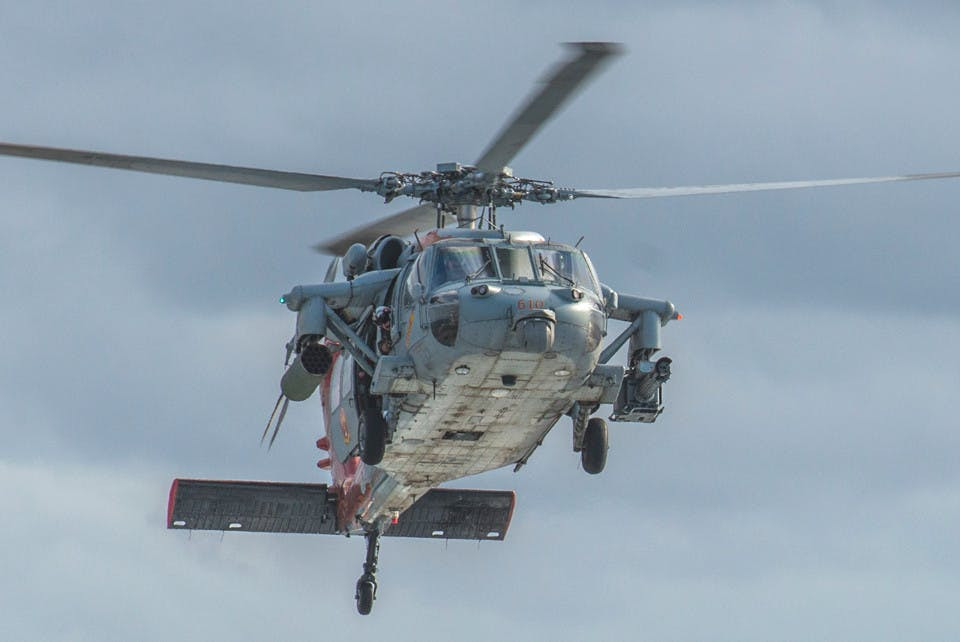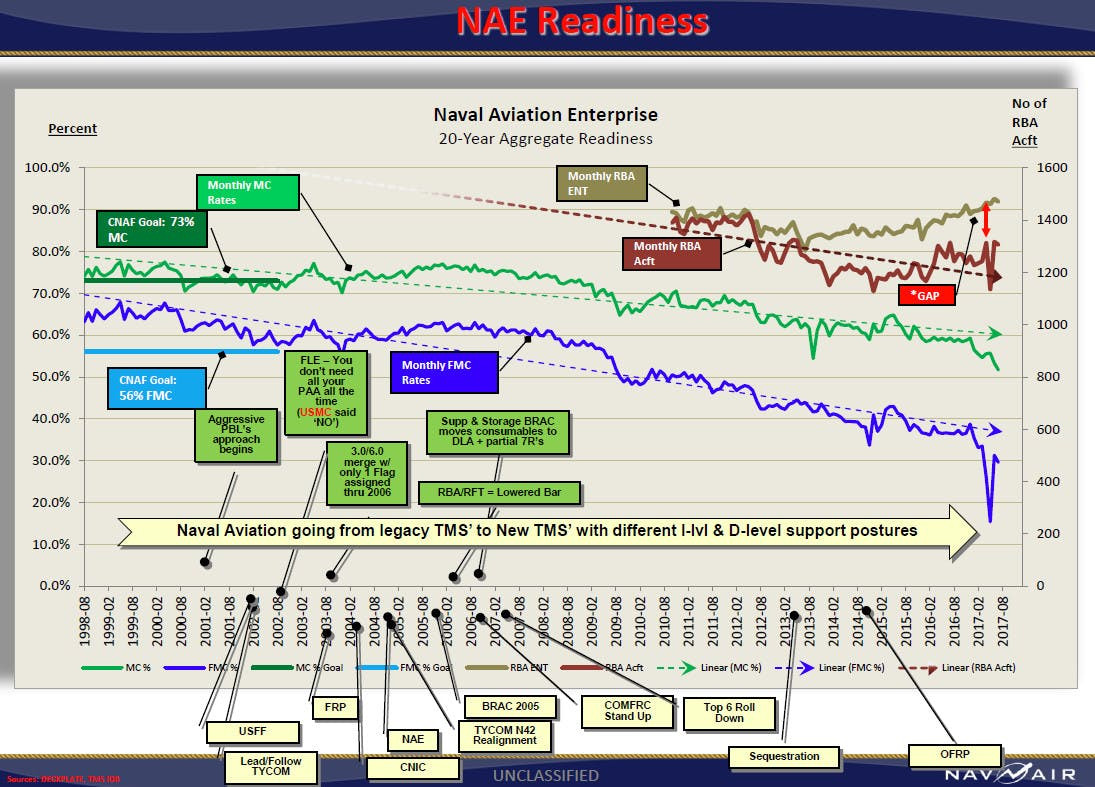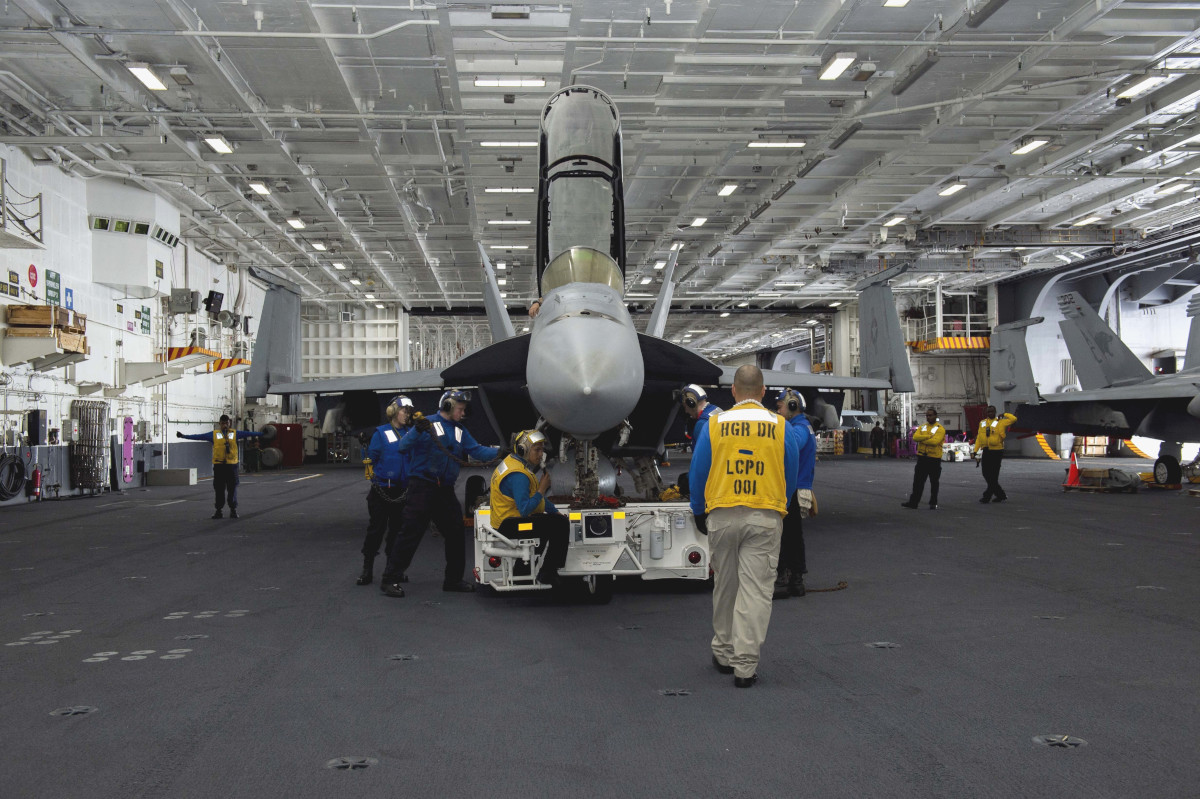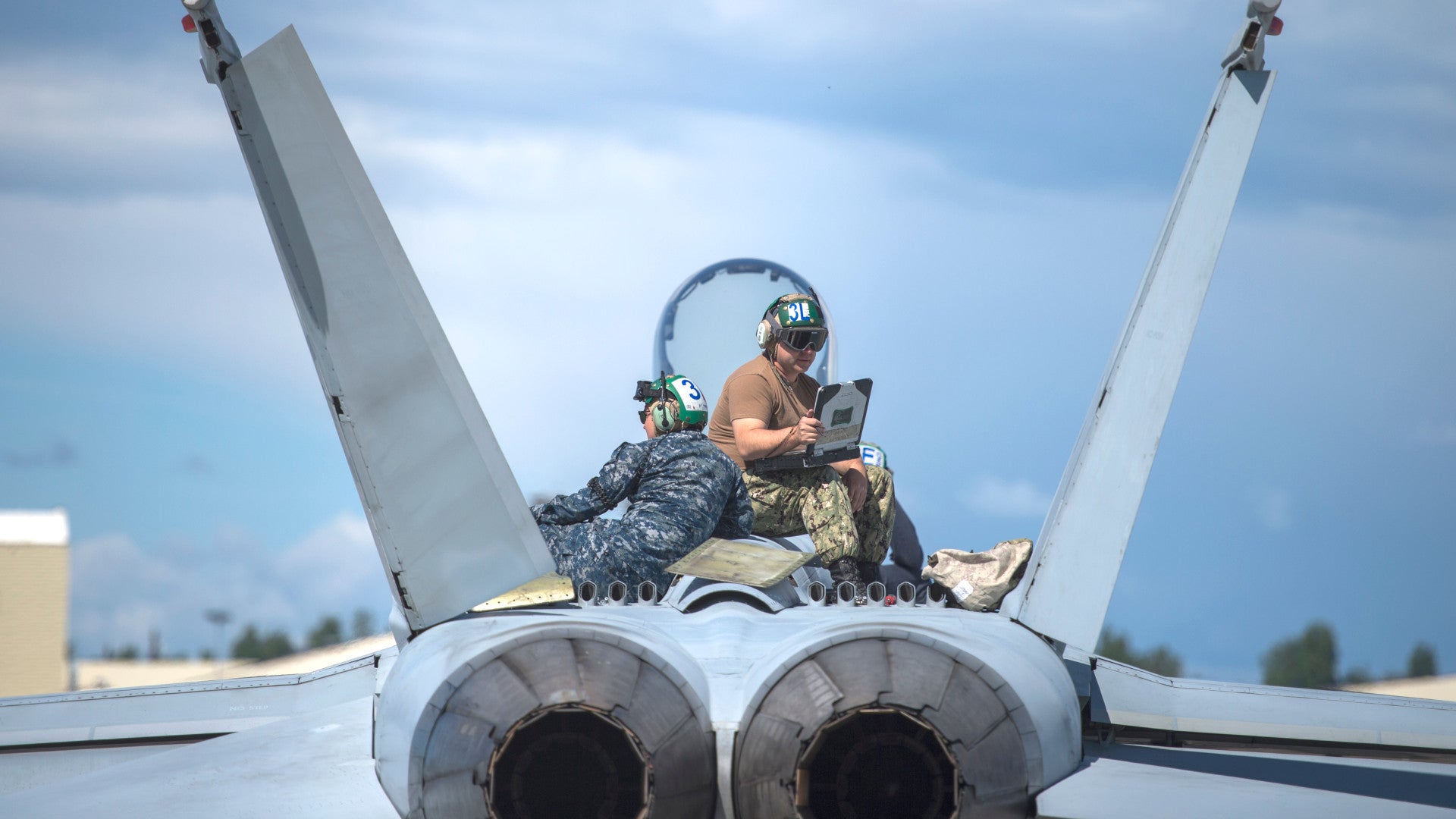The U.S. Navy is reportedly looking at a major budget shortfall of at least $100 million for aviation operations and maintenance for the rest of the fiscal year. The service is now looking at cutting flight hours for fixed- and rotary-wing aircraft assigned to operational and non-operational units, curtailing deployments for certain helicopter squadrons, grounding an entire air wing, and more to close the funding gap. This might help explain the abrupt announcement yesterday that the Navy’s Super Hornet Demonstration Team was canceling the rest of its performances for 2019 and could have a serious impact on attempts to improve readiness across naval aviation communities.
USNI News got the scoop on the Navy aviation community’s budget woes on June 27, 2019, citing anonymous sources. U.S. Navy Rear Admiral Roy Kelly, Commander of Naval Air Force Atlantic, who is in charge of the bulk of East Coast-based naval aviation units, was reportedly among those to alert the service’s senior leadership that he might have to begin truncating various flight activities in order to save money. The 2019 Fiscal Year ends on Sept. 30, 2019.
“Naval aviation is at its highest readiness in more than a decade, and we will ensure our deployed forces remain ready and continue to effectively meet their missions in accordance with the congressional guidelines and appropriations under the law,” U.S. Navy Commander Ron Flanders, a spokesperson for Commander, Naval Air Force, the service’s top aviation command, told USNI News, declining to confirm or deny the funding gap. “We constantly look for ways to deliver on that, and we continue to consider specific steps to best manage our resources and our costs.”
Rear Admiral Kelly is considering reducing flight hours for all units under his command for the rest of the fiscal year and could even ground an entire air wing, according to USNI News‘ sources. Naval Air Force Atlantic oversees Carrier Air Wings One, Three, Seven, and Eight, as well as the Strike Fighter Wing, Helicopter Maritime Strike Wing, and Helicopter Sea Combat Wing assigned to the Navy’s Atlantic Fleet. Kelly could also scale back the deployment of detachments from Helicopter Maritime Strike and Helicopter Sea Combat Squadrons, which operate MH-60R and MH-60S Seahawks respectively, something that could have a cascading impact on the capabilities or outright deployability of ships that rely on these helicopters for support.

The Rear Admiral has also discussed halting flyovers, such as those over sporting events, until further notice. USNI News says that the Navy has not made any final decisions as to what course or courses of action to pursue in order to deal with the funding shortfall. The service could also ask Congress to allow them to shift funds from other accounts to help keep units flying.
However, on June 26, 2019, Strike Fighter Squadron 106 (VFA-106), the “Gladiators,” which manages the Navy’s F/A-18E/F Super Hornet Demonstration Team, said that the team’s remaining performances for the year were canceled, which came as a surprise to the Air Show community. VFA-106 is the Fleet Replacement Squadron (FRS) assigned to Commander, Strike Fighter Wing, Atlantic Fleet.
“As the East Coast Super Hornet Fleet Replacement Squadron, the mission of VFA-106 is to provide the fleet with superbly trained replacement aircrew to support fleet readiness,” a post on the official Facebook page for the Super Hornet Demonstration Team read. “This mission will always take priority over displaying the remarkable Super Hornet across the country.”
The Tailhook Legacy Team, which includes a Super Hornet from Strike Fighter Squadron 122 (VFA-122), the “Flying Eagles,” will finish the rest of its schedule. VFA-122 is the FRS assigned to Commander, Strike Fighter Wing, Pacific Fleet.
It is curious that Rear Admiral Kelly has been the only one named so far as raising concerns about shortfalls and that the East Coast Super Hornet Demonstration Team is cutting its schedule short while the West Coast Tailhook Legacy Team will continue without interruption. This raises the question about whether the budgetary difficulties are actually isolated to East Coast aviation units.

USNI News did not identify the exact cause or causes of the shortfall, either. One possibility might be that the Navy expended more funds on naval aviation operations and maintenance than it expected to in order to try to improve readiness rates.
Naval aviation readiness across the board has been in steady decline for more than a decade due to a combination of factors and has reached critically low levels in recent years, an issue The War Zone has explored in great depth here. In September 2018, then-Secretary of Defense James Mattis specifically mandated that the Navy, as well as the Marines, increase the average mission capable rates of their F/A-18 Hornets, F/A-18E/F Super Hornets, and F-35 Joint Strike Fighters to at least 80 percent by the end of the 2019 Fiscal Year. The U.S. Air Force also got the order to ensure that its fleets of F-16 Vipers, F-22 Raptors, and F-35s met this same target.

In April 2019, senior Navy officials told Congress that the Super Hornet mission capable rate had hit 75 percent, up from 50 percent the previous year. The Navy and Marine Corps have not offered similar specifics about readiness improvements among their fleets of older model Hornets or F-35s. The Air Force has itself already acknowledged that its F-22s, at least, will not meet the 80 percent goal.
If the lack of funds is at all related to efforts to improve readiness, this also raises questions about the sustainability of any of those gains in the long term if the overall defense budget only increases at relatively modest levels in the coming years or if it gets cut. Since President Donald Trump took office in 2017, the defense budget has already grown significantly, especially with regards to funding for operations and maintenance.

This report of a naval aviation funding shortfall comes as a battle over the next defense budget appears to be brewing on Capitol Hill. On June 27, 2019, the Senate passed their version of the annual defense policy bill, also known as the National Defense Authorization Act (NDAA), which sets the defense budget topline and includes various spending requirements.
The Senate’s NDAA outlines a $750 billion spending plan, while the House version, which passed last week, sets the total defense spending figure at $733 billion. The two bills feature distinctly different language on a variety of topics, as well, especially regarding nuclear modernization plans. If the House and Senate cannot reconcile these issues before the end of September, it could precipitate yet another partial government shutdown.
In the meantime, it remains to be seen what the full extent of the naval aviation funding shortfall is and what options the Navy might choose to trim back spending before the end of the fiscal year and what impact those decisions might have on naval aviation operations and readiness.
It’s amazing this is even an issue at a time of record high defense budgets that have been specifically plowing more funding into the readiness.
Contact the author: joe@thedrive.com
